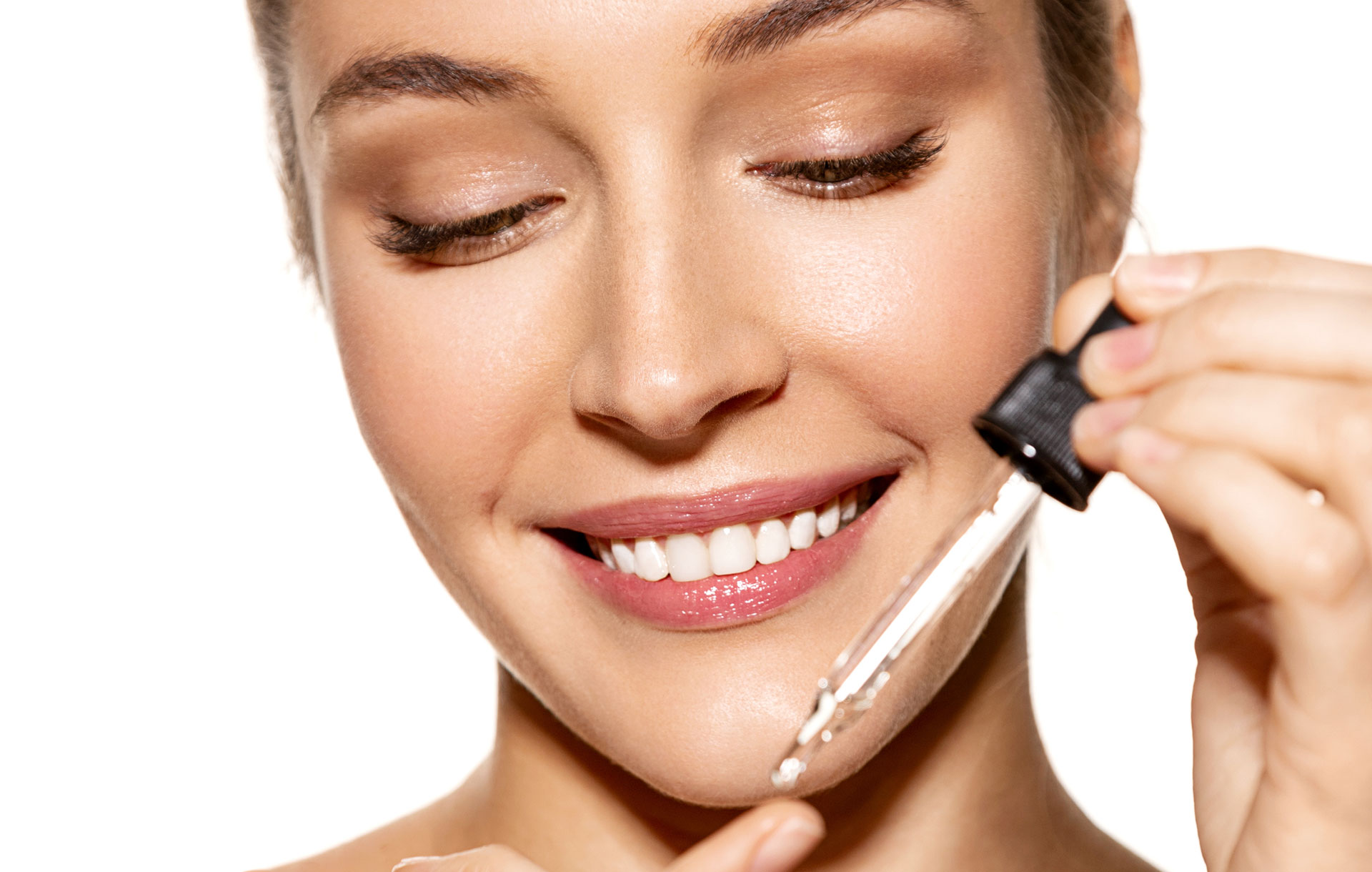The Role of Peptides in Delaying Invasive Proceduresprocedures
The relationship between an esthetician and their client is one founded on trust. This puts the esthetician in a unique position of becoming a resource and expert for their clients on many skin- related issues, even those that rest outside the scope of their licensure. It’s a delicate balance to offer advice on topics such as plastic surgery, since an esthetician must avoid diagnosing diseases and making recommendations for which they are not licensed.
By having an open dialogue with clients, however, it’s possible for you to helpfully guide them through the stages of managing their aging skin, knowing what you can do to help them delay (or avoid) the need to visit a plastic surgeon. Healthy and youthful skin is supported by the extracellular matrix (ECM); a complex network of biomolecules that support and protect the dermis. This “scaffolding” is critical to keeping skin firm and full. With age, but mostly due to external factors, this ECM is broken down, leading to laxity, wrinkling and a loss of the facial fullness typical of a youthful appearance.
As an esthetician, helping your clients protect and regenerate this all-important matrix throughout their lifetime can help reduce the potential for needing surgical procedures later in life. Although the skin’s aging process begins in one’s mid-20s, with slowed collagen production and lagging cell turnover, most clients don’t start age control practice in earnest until they reach their 30s and 40s.
The severity of the visible signs of aging will vary greatly between clients depending on their previous lifestyle choices, and whether or not they use sunscreen and preventative topical products on a daily basis.
30s AND 40s
During the 30s and 40s, it is crucial to educate clients about the importance of daily sun protection to guard skin from unnecessary breakdown caused by UV exposure. Now is also the time to introduce them to antioxidants and collagen-building products that will help increase facial volume and minimize the appearance of wrinkles.It takes only one tenth the amount of UV exposure that it takes to develop sunburn to turn on the matrix metalloproteinase enzymes (MMP) that are responsible for breaking down collagen and other important matrix components. Daily use of broad spectrum sunscreen with an SPF of at least 30 is critical for all clients, regardless of their age. Retinol is an excellent ingredient for building collagen, normalizing cell turnover, evening skin tone and texture and working to inhibit the negative effects of MMP.
Other MMP inhibitors (MMPi) are:
- Tocopherol
- Resveratrol
- L-ascorbic acid (which is also an important collagen-builder)
- Beta-carotene
- Epigallocatechin gallate (EGCG) from green tea
Peptides are also an important ingredient category for clients looking to delay surgery and sustain youthful skin. There are three common types of peptides used in skin care: neurotransmitter-affecting peptides, carrier peptides and signal peptides.
NEUROTRANSMITTER-AFFECTING PEPTIDES
Neurotransmitter-affecting peptides work to interfere with transmissions of signals that cause muscle contractions. One that is commonly used in skin care is acetyl hexapeptide-8, a chain of six amino acids that has demonstrated a 30 percent decrease in the depth of wrinkles with twice-daily use for 30 days.
A popular neurotransmitter-affecting peptide that is widely used in topicals is dipeptide diaminobutyroyl benzylamide diacetate, a peptide that has a fast-acting wrinkle smoothing effect around the eyes, diminishing wrinkles and expression lines.
CARRIER PEPTIDES
Carrier peptides increase the uptake of copper by cells when it’s used with a tripeptide. Copper plays a role in increasing collagen, glycosaminoglycan and adhesive protein production.
SIGNAL PEPTIDES
Signal peptides are used to instigate specific actions within the skin. These peptides are shown to stimulate collagen production and, in some cases, elastin production.
Some common signal peptides are:
- Palmitoyl pentapeptide-4
- Palmitoyl oligopeptide
- Some newer signal peptides are:
- Myristoyl pentapeptide-8
- Myristoyl hexapeptide-4
- Palmitoyl tripeptide-38
These are shown to increase the production of many important matrix components to strengthen and improve the appearance of aging skin. It’s also wise to suggest monthly chemical peel treatments to keep cell turnover normalized and the surface of the skin smooth, and to increase the penetration of anti-aging products applied topically. These strategies during the 30s and early 40s can help delay the potential necessity for surgical intervention as your clients grow older.
50s
It’s really in the 50s when more dramatic loss of facial volume and laxity become more apparent. The drop in estrogen production as women move into menopause has been proven to play a role in the slowing of the production of matrix components. This, in conjunction with the breakdown of existing collagen due to genetic factors, as well as UV exposure, leads to more dramatic volume loss in the face, which is often a motivator for patients to seek out surgical options. At this stage it’s often sufficient to add in the use of injectable fillers.
Injectables must be performed by qualified medical staff, but can be an option for the esthetician to suggest to their clients. This is a great example of the importance of having a good relationship with a dermatologist and plastic surgeon to whom you can refer those you treat. A referral for injectables would not end your close relationship, as your clients would still need to focus on regular peels and consistent anti-aging skin care in order to maintain the results they have achieved with you previously.
When it’s time to refer your client, the use of poly L-lactic acid and other volume enhancers can make a dramatic difference in a person’s appearance without surgery. That said, there does come a time when excessive wrinkling and laxity cannot be overcome without some surgical lifting. Once you believe that this time may have come, it is wise to refer your clients to a trusted plastic surgeon for a consultation.
Again, this is only a supplement to your services for the client, not a handing over. If surgery is the client’s preferred path, properly caring for skin prior to a surgical procedure greatly improves the outcome. For every referral you give, you can also consider sending your card and a list of your services to the plastic surgeon’s office. If they don’t offer the professional skin treatments you offer in their business, they may return the favor and refer their patients to you as well.
The importance of healthy skin prior to procedures Regardless of what procedures a client ultimately undergoes, having healthy, resilient skin prior to the surgery will lead to a more positive outcome. Having a facelift may tighten skin, but if the skin being tightened is coarse, discolored and lacking volume, these negative attributes will not be alleviated by the surgery. As an esthetician, you can help your clients prepare for surgery by performing gentle, superficial chemical peels and ensuring that they are following a comprehensive, collagen-building regimen every day at home.












